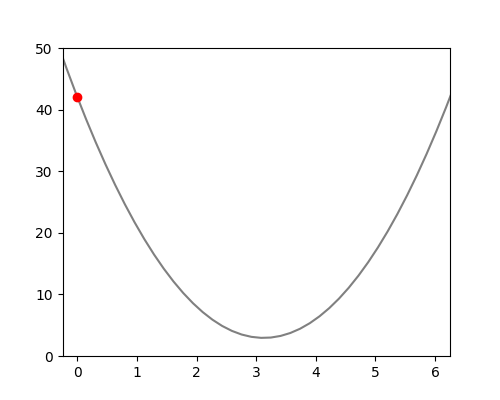I think I misinterpreted the question. This answer describes how to visualise the cryptographic working of threshold schemes. It is not really good for visualising the idea of these kinds of schemes to laymen.
I think the best way to explain Shamir secret sharing is by using graphs. Most readers will have a basic understanding of low-order polynomials, so you could do something like this:
Share creation
Let us explain a simplified form of Shamir Secret sharing with $5$ shares and a threshold of $3$. We will pick our secret in the range $0 \ldots 50$ (modulo $50$). I like the number $42$, so we will use that as the secret.
First we will generate a random polynomial of order $3$. This polynomial will be randomly generated, except for the lowest term, where we will fill in our secret ($42$).
My random generator gave me the nice parabola $4x^2 + 25x + 42 \pmod{50}$.
We will take this parabola and evaluate the five points with values of $x$ in the range $1\ldots6$.

The exact values of these points are: $(1, 21), (2, 8), (3, 3), (4, 6), (5, 17)$ and $(6, 36)$. We will divide the points under the participants, and we hope they will keep them safe.
Note that the point $(x,y) = (0,42)$ is off limits, because this would reveal our secret.
Share combination
We'll say that the participants with the points $(4, 6)$, $(1, 21)$, and $(2, 8)$ want to use their shares to get the original secret back. Recall that we had used a polynomial that was in the form $a_2 x^2 + a_1 x + a_0$. So essentially, we only have to solve the following equation:
$$y = a_2 x^2 + a_1 x + a_0$$
Filling in the three points gives us the following system of linear equations:
$$
\left\{
\begin{aligned}
a_2 4^2 + a_1 4 + a_0 &= 6 \\
a_2 1^2 + a_1 1 + a_0 &= 21 \\
a_2 2^2 + a_1 2 + a_0 &= 8
\end{aligned}
\right.
$$
Visualising this in a picture:

Solving this system gives us $a_2 = 4, a_1 = 25, a_0 = 42$, a.k.a. the polynomial $4x^2 + 25x + 42$.
You may get actually get $4x^2 - 25x + 42$, but remember that the coefficients where defined modulo $50$, so this is equivalent to $4x^2 + 25x + 42$.
The participants remember that they encoded the lowest coefficient $a_0$ as the secret. So now they know that their original secret was $a_0 = \mathbf{42}$:





